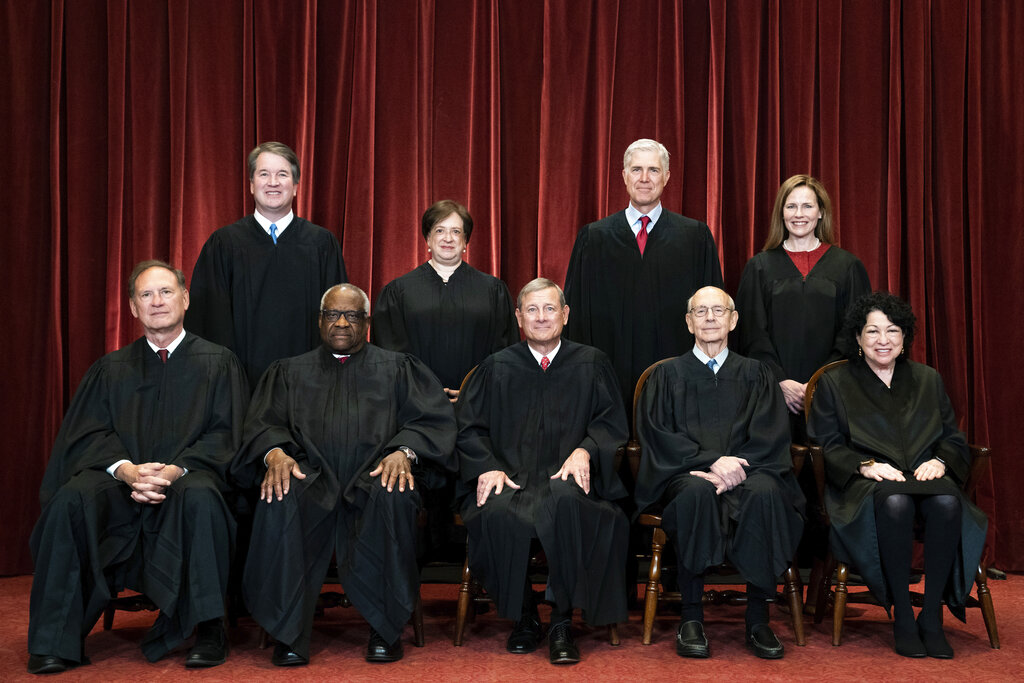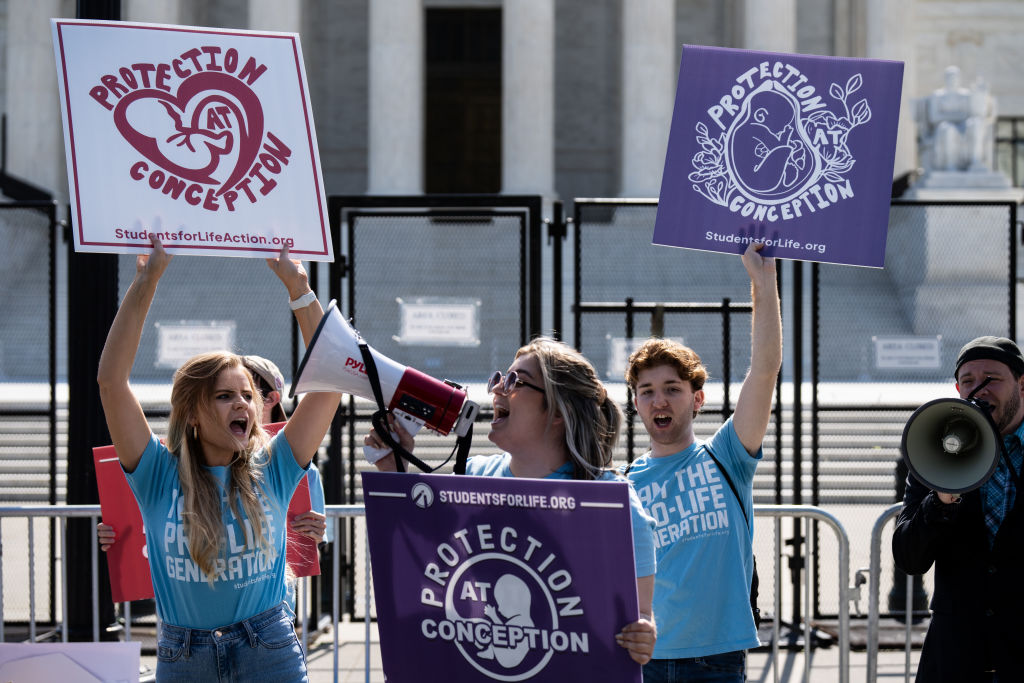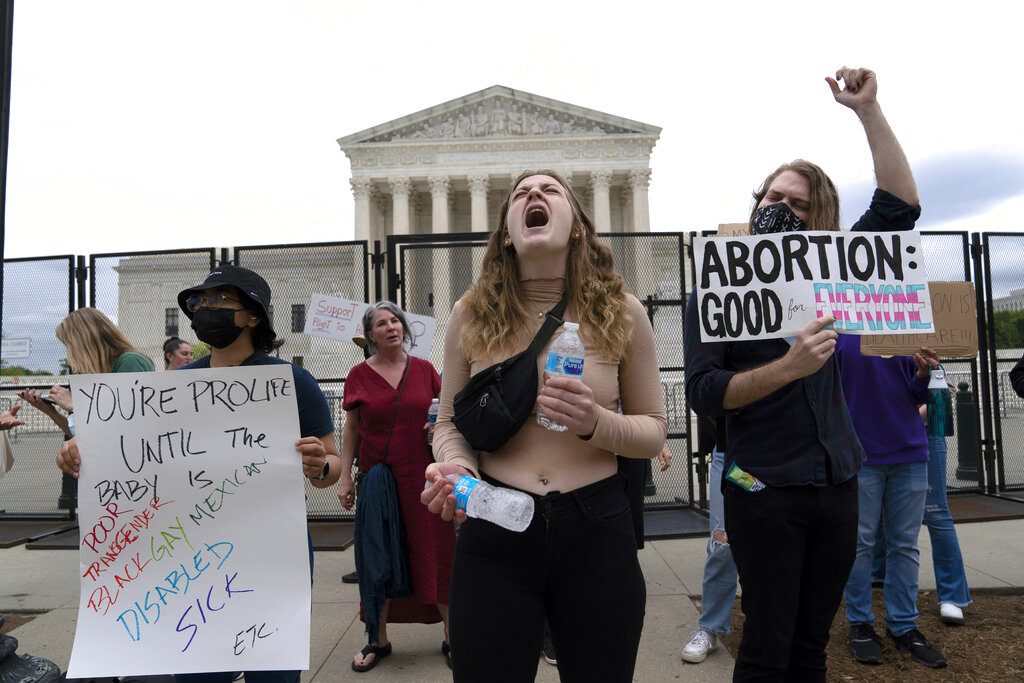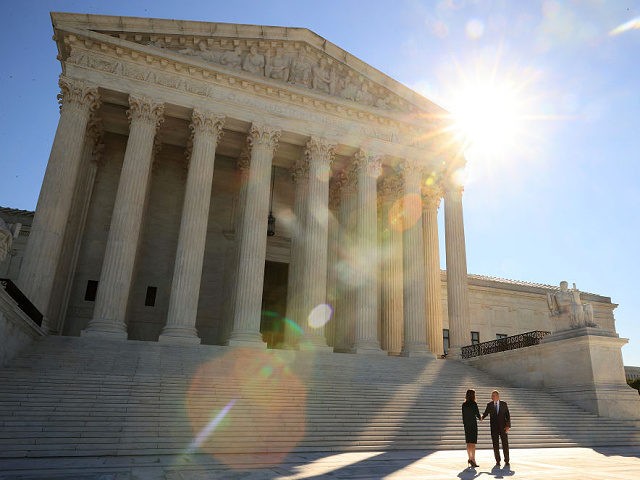WASHINGTON, DC – Time is ticking as the Supreme Court has three weeks left on its official calendar to decide 29 cases – including six major cases, half of which are likely historic – or extend its sessions into July, with profound decisions to make on abortion, the Second Amendment, and religious liberty.
The Supreme Court’s term begins on the first Monday of October until the first Monday of the following year’s October. But even though the court’s term technically continues throughout the summer and early autumn – permitting the justices to rule on emergencies or do housekeeping matters – the court “rises” when all the cases for the current term have been decided. This typically happens during the last week of June.
What begins then is not vacation time. The justices might take a couple of weeks of vacation during this time, just like other Americans, and use the time for guest lecturing, travel, or perhaps working on a book. But the justices also spend time preparing for the cases they will be hearing in the fall and getting ready to vote on over 1,000 petitions piling up from lower courts asking the Supreme Court to review a matter. Their law clerks and office staff continue to work during this time under the justices’ supervision.
But as far as the public sees, the end of June is the end of the Supreme Court’s term. Final decisions are handed down – inevitably including at least a couple of big ones – and the justices disappear from public life for a few months.
However, now the court faces the midpoint of June with 29 cases still undecided out of the 59 cases the court heard this term. (As an aside, in recent decades, the court typically decides between 70 and 80 cases in a term.) That is a lot of decisions to hand down in two and a half weeks.

Members of the Supreme Court pose for a group photo at the Supreme Court in Washington, DC, on April 23, 2021. Seated from left are Associate Justice Samuel Alito, Associate Justice Clarence Thomas, Chief Justice John Roberts, Associate Justice Stephen Breyer and Associate Justice Sonia Sotomayor, Standing from left are Associate Justice Brett Kavanaugh, Associate Justice Elena Kagan, Associate Justice Neil Gorsuch and Associate Justice Amy Coney Barrett. (Erin Schaff/The New York Times via AP, Pool)
More than that, six of these cases are major cases. One is Biden v. Texas, about President Joe Biden’s attempt to shut down one of former President Donald Trump’s signature policies, the Migrant Protection Protocols (MPP), better known as “Remain in Mexico,” without which the number of illegal aliens making it into this country would be far higher.
Another is Carson v. Makin, a case brought by First Liberty Institute and the Institute for Justice about school choice where the state of Main is discriminating against families who want to send their children to Christian schools.
A third is West Virginia v. EPA, about whether Biden’s EPA has almost unlimited authority to issue sweeping environmental regulations that could transform the American economy.
The remaining major cases are so big that at least one – and potentially all – are nothing short of historic, sure to have a profound impact on the direction of the country.
One is New York State Rifle & Pistol Association v. Bruen, about whether the Second Amendment right to keep and bear arms extends outside the home. The only two major gun rights cases decided by the Supreme Court involved citizens who wanted handguns at home for self-protection, and now the court will consider how that right applies as citizens go about their daily lives.
Another is Kennedy v. Bremerton School District, about a former U.S. Marine high school football coach who was fired by a public school for his custom of offering a short, silent prayer on his team’s football field after each Friday night football game. This case could be a major ruling on three separate First Amendment issues: free speech rights in schools and/or for government employees, the right to freely exercise religion for government workers, and the proper meaning of the Constitution’s Establishment Clause, which forbids the government from adopting an official religion.
Finally – of course – is Dobbs v. Jackson Women’s Health Organization, challenging a Mississippi ban on abortions after 15 weeks, in which it now looks like a majority of the Supreme Court is willing to overrule Roe v. Wade by holding that the Constitution does not include an implied right to abortion. One way or the other, Dobbs will feature prominently in history books concerning this period of time in America.

Pro-life activists protest outside the U.S. Supreme Court in Washington, DC, on Monday, May 23, 2022. Security precautions are elevated in anticipation of the court overturning Roe v Wade. (Bill Clark/CQ-Roll Call, Inc via Getty Images)

Pro-abortion activist protest outside of the U.S. Supreme Court on May 5, 2022 in Washington, DC. (AP Photo/Jose Luis Magana)
Some writers say it should not be a problem for the court to dispose of 29 cases during this time because, for example, in 1982, the court still had 69 cases to decide out of 141.
But that was a different era. The court puts more man-hours into each case now than it did then, aiming for better decisions that give more effective guidance to the lower courts and the rest of the nation. While some believe the court should take more cases than it currently does, even if far less than 141 – your current author believes that 90 cases would be a better target number – finalizing 29 cases in three weeks is a heavy lift.
More than that, with no disrespect to the Supreme Court’s October Term 1981 – which includes June 1982 – those cases are not in the same ballpark as the blockbuster cases currently pending before the justices. There’s just no comparison of the legal significance for the nation between Nixon v. Fitzgerald (presidential immunity from civil suit) and Dobbs. This year’s cases could shape the future of America. Such cases require an extraordinary number of hours of work.
The Supreme Court will likely release cases on at least two days in each of the next three weeks. If any cases remain at that point, then all eyes will continue to focus on the court as its term extends into July.
Ken Klukowski is an attorney who served in the White House and Justice Department, and is a Breitbart News contributor. Follow him @kenklukowski.

COMMENTS
Please let us know if you're having issues with commenting.